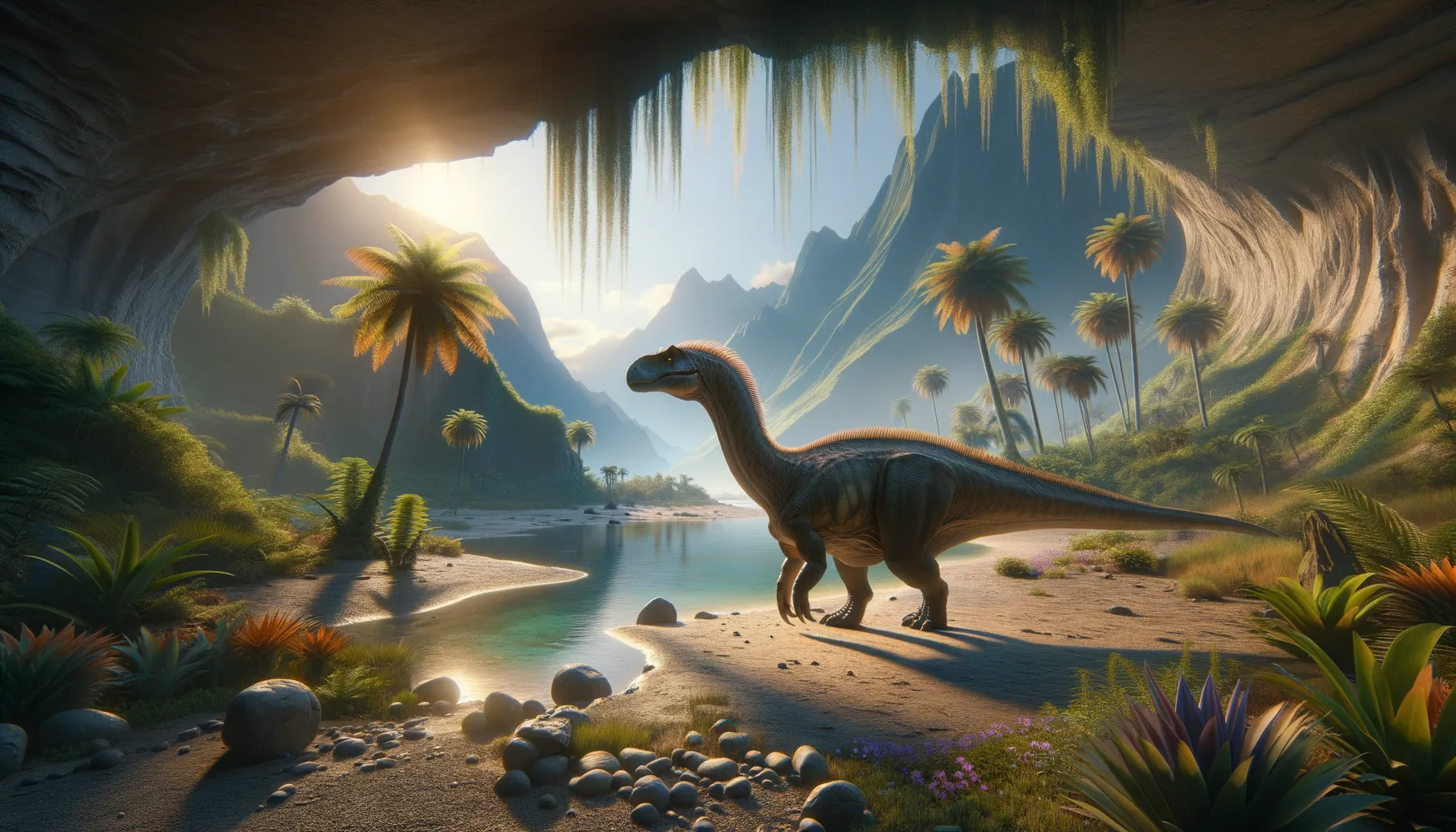
Tatisaurus
A tiny titan of the Jurassic world!
Period
Jurassic
Length
Roughly 2 meters long.
Height
Stood about 1 meter tall.
Weight
Approximately 100 kilograms.
Tatisaurus was a small, early dinosaur that lived during the Jurassic period. Characterized by its moderate size, it provides valuable insights into the evolution of early ornithischian dinosaurs. Notably discovered in China, Tatisaurus is known for its intriguing blend of primitive and more developed features. Its remains offer tantalizing clues about dinosaur diversity and adaptability in prehistoric ecosystems.
Diet
Tatisaurus was a herbivore, feeding primarily on low-lying vegetation. Its teeth were adapted for grinding and processing tough plant material, essential for survival in its ancient habitat.
Hunting
As a herbivore, Tatisaurus did not hunt other animals. Instead, it foraged for plants, using its agility to avoid potential predators in its environment.
Environmental challenges
Living in the dynamic ecosystems of the Jurassic, Tatisaurus faced both climatic shifts and the presence of predators. Its ability to seek shelter and find food amidst changing plant life was vital for survival. Additionally, competition for resources with other herbivores posed ongoing challenges.
Speed
Moderate, capable of quick bursts.
Lifespan
Estimated to be around 20 to 30 years.
First discovery
Found in the Early Jurassic rocks of China.
Fun Facts
- Tatisaurus was a small dinosaur that lived during the early Jurassic period, about 190 million years ago.
- The name Tatisaurus means 'Tati lizard,' named after Tati, a region in Africa where its fossils were discovered.
- This dinosaur was a herbivore, meaning it mainly ate plants.
- Tatisaurus was relatively small and light, estimated to be about 3 meters long and weighing around 70 kilograms.
- Its fossils were first found in what is now Zimbabwe, making it one of the few dinosaurs discovered in Africa.
- Tatisaurus is considered to be a basal ornithischian, which refers to a group of dinosaurs with a special hip structure.
- Despite being discovered in the 1960s, Tatisaurus is still something of a mystery due to limited fossil evidence.
Growth and Development
Tatisaurus exhibited relatively slow growth rates, typical of many early dinosaurs. Juveniles likely started life small and vulnerable, gradually growing to reach their adult size. Fossilized bones suggest they had growth rings, similar to those in trees, indicating their age and development stages.
Habitat
Tatisaurus occupied diverse environments, including lush forests and open plains. These habitats provided ample vegetation for its herbivorous diet. Seasonal changes would have impacted food availability, driving migration or adaptation.
Interaction with other species
Tatisaurus coexisted with various other dinosaur species, mostly larger herbivores and carnivores. Its interactions were primarily competitive as it sought food and evaded predators. Being a small dinosaur, its survival depended on not attracting attention from larger, more aggressive species.
Natural lifespan
Tatisaurus had a natural lifespan of about 20 to 30 years.
Reproduction
Tatisaurus likely reproduced by laying eggs, as suggested by fossil evidence from related species. Nesting sites would have been crucial for the protection of the next generation. Parental care strategies are unknown but might have involved guarding nests.
Social behaviour
There is limited evidence on its social behaviour, but Tatisaurus might have lived in small groups for protection. Group living would have enhanced survival chances against predators and facilitated the sharing of resources.
Fossil locations
Fossils of Tatisaurus have primarily been found in the Lufeng Formation in China. These findings contribute to understanding Jurassic-era ecosystems and the distribution of early ornithischians. The fossils provide important insights into early dinosaur anatomy and behavior.
